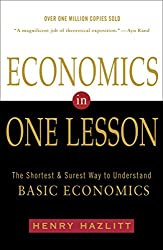
Rating: 7.3/10.
The Future is Degrowth: A Guide to a World Beyond Capitalism by Matthias Schmelzer, Andrea Vetter, Aaron Vansintjan
Book about the degrowth movement, which has gained some support in activist communities. There are different conceptions of what degrowth entails, but we generally propose the idea that GDP growth should be decoupled from progress and advocate for greater convergence between the wealthy and the poor, both within countries and across nations. However, the movement does not advocate for recessions and austerity; some people prefer the term “postgrowth” due to the negative connotations associated with the word “degrowth.”
Reasons why growth is popular: economic growth is a relatively new concept but since the post-war period, growth has become synonymous with progress, even though it has limited connection with human well-being. The promise of growth makes it easier to accept inequality. However, the problem is that economic growth necessitates ever-increasing material and natural resource consumption at an unsustainable pace.
The longest chapter of the book criticizes economic growth in various ways. From an environmentalist perspective, historically economic growth has been largely correlated with carbon emissions; even today with a high quality of life, growth continues indefinitely because many goods depend on positional competition relative to others, leading to an arms race of increasing consumption and increasing environmental degradation. A more general critique of the capitalist system is that capitalism alienates humans from what gives us purpose and fundamentally leads to increased consumption and accumulation of resources at the top, especially with technology which has led to more centralization of control and created more layers of complexity to manage the technology, further distancing actual humans from the value brought on by their work. Another criticism is that growth has been a way for the global south to be exploited by globalization, essentially a capitalist extension of the colonial period. The far right also has some anti-growth advocates, but for very different reasons, such as rejecting globalization and advocating for a return to a simpler and ethnically homogeneous state. This is obviously incompatible with the degrowth movement, which focuses on environmental impact and reducing inequality.
Some proposals to achieve the degrowth vision include redistributing wealth and organizing society around sharing and community ownership of resources rather than emphasizing private property. The aim overall is to reduce economic activity without greatly reducing the quality of life and to eliminate the need for growth as a requirement for the economy to be functional. More policies include dismantling capitalist institutions like financial institutions that don’t clearly contribute to well-being and implementing universal basic income to allow everyone a dignified life. Additionally, reducing working hours and collectively agreeing to stop ecologically destructive activities and exploitative trade are crucial. Some case studies of degrowth have been conducted on a small scale in alternative “nowtopia” societies that avoid capitalist structures, and the authors advocate for more activism and protests to urge federal governments to reverse the status quo towards growth.
Overall, the writing of this book is quite academic, with numerous references on all pages. However, the papers referenced do not provide quantitative or evidence-based support, relying instead on argumentation and opinions. Many of the proposals and criticisms of capitalism are valid; however, the proposals for degrowth are very vague. Some of these proposals clearly resemble communism, but the authors avoid using this terminology. The authors also avoid providing much details about enforcement or how these visions can translate to policy, other than suggesting that everyone should agree at the same time to stop doing things they don’t like. There are not many concrete proposals for policies that are feasible within our current system, so the overall vision is not too realistic. Probably any movement towards these visions will require the world to transition into a more authoritarian state where enforcement is possible on a large scale, but this is not explicitly discussed in the book.



